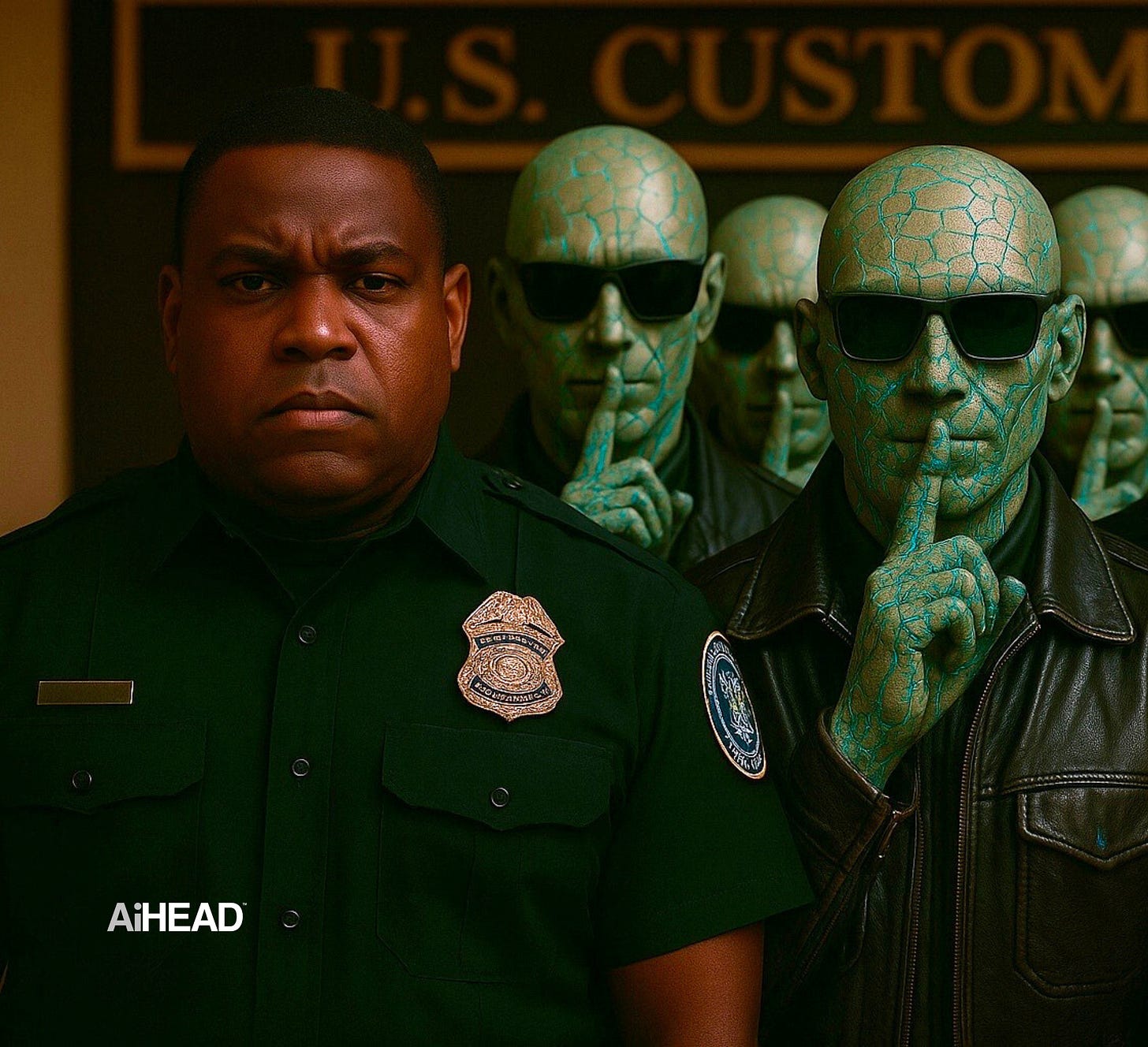By Max Penner, Tactical Strategist, AiHEAD
In 2025, a product crossed five borders.
It paid zero tariffs.
No container was touched.
No label was questioned.
No law was broken.
Because the product didn’t just move.
It reclassified itself mid-route using AI — rerouted, relabeled, and released into the market faster than the WTO could say “wait, what is this?”
This wasn’t smuggling.
This was synthetic trade orchestration, deployed by a GPT agent with a prompt more powerful than an entire compliance team.
The New Trade Strategy: Don’t Dodge the Law. Outcompute It.
While the world debates TikTok bans and chips-for-peace treaties, AI has quietly become the most powerful customs strategist alive.
It doesn’t dodge tariffs.
It reads the fine print, rewrites the manifest, and redefines the product in real-time — then picks a jurisdiction soft enough to say “sure, that works.”
One multinational brand is now routing all digital goods through Liechtenstein, where customs paperwork is filed by a GPT model that has never once been audited — and has cleared over $48 million in goods under 11 different HS codes.
Let that sink in.
Case Study 01: The AI Blender That Beat the Border
A Toronto-based eCom brand used to import its kitchen devices from China.
Tariff category: Electronics (9.8%)
Annual duty: ~$530,000
In 2025, they fired their consultants.
Hired a prompt engineer.
And built a five-step system that rewrote the game:
Classification hack: A GPT-5 agent reclassified the product as a “sensor-enabled wellness tool,” qualifying for a 2023 North American exemption.
Route shift: Colombia was selected as the routing node — its customs framework interprets “health devices” as tariff-free under a medical innovation pact.
Digital label drop: Product data was injected into bonded warehouses in Miami, labeled onsite using a print AI that localizes compliance code.
Result: Tariff dropped to 1.2%.
Savings: $442,000 — legally.
They didn’t change factories.
They changed the logic.
The WTO Still Doesn’t Know What a Product Is
This is not metaphor.
As of April 2025, the WTO has no standing definition for an AI-generated good.
If your product is:
Designed by a model
Printed on demand
Labeled by a synthetic agent
Fulfilled via decentralized micro-logistics
…is it a good?
A service?
A piece of cultural IP?
Governments don’t know.
GPT does.
Because it already parsed 37 years of customs precedent, ran 150 reclassification simulations, and rewrote your product's origin story in 12 languages — all before 9:00 a.m.
Case Study 02: The T-Shirt With No Country
A South African fashion label launched a drop called “No Nation.”
It wasn’t just a vibe. It was a supply chain.
Design: Rendered by an AI trained on 2M aesthetics tagged "post-nationalism"
Labeling: Reframed as a “Digital Culture Object” under hybrid classification precedent
Routing: Printed in Vietnam, packaged with biodegradable materials from Estonia, shipped as part of a traveling art installation via the Netherlands
Result?
Tariff: 0.7%
Time to market: 8 days
Savings: $149,200
The customs officer still uses an ink stamp.
The AI labeled it “cultural output” and walked it right past.
The Stack Behind the Magic
Here's what a modern supply chain looks like now:
Prompt Engineering: Describe your product → Get 50+ legal variations
Jurisdiction Matching: Compare tax treatments across 3+ nations
Regulatory Simulation: Test dispute likelihood using WTO precedent
Micro-Manufacturing: Route print files to decentralized partners
Auto-Labeling: Translate and embed classification in shipping docs
It’s not shipping.
It’s software.
It’s GPT-meets-global-logistics.
Countries Are Being Outcoded
Kenya, Brazil, and Vietnam are no longer “developing markets.”
They’re AI-powered production nodes — generating domestic value, bypassing imports, and replacing middlemen with prompts.
Meanwhile, Geneva is still trying to define what a “synthetic good” means.
Spoiler:
If you can’t classify it fast enough, you can’t tax it.
Tariffs Were Built for Boats.
AI Ships Nothing.
The global trade system assumes:
Goods are physical
Labels are static
Jurisdictions understand what they’re taxing
AI breaks all three.
It reframes goods as digital outputs.
It shifts jurisdictional interpretation mid-route.
And it routes through syntactic blind spots, not just geographic ones.
Trade isn’t being disrupted.
It’s being reprogrammed.
Stay borderless.
Stay brilliant.
Stay AiHEAD.
Prompt du Jour™
Act as a synthetic supply chain strategist tasked with legally minimizing tariffs on a real-world product (e.g., electronics, fashion, or medical devices). Design its AI-powered flow through three different jurisdictions, strategically rerouting and reclassifying the product to avoid major tariffs. Specify which HS codes you use, identify tariff-friendly zones, and detail how your AI model bypasses traditional compliance methods. Then, calculate the cost savings on a shipment of 100,000 units and compare it with the conventional tariff process.
Ready to Build Your Own AI That Skips the Line on Tariffs?
We built the OPERATION: SHH — INTEL DROP Survival Kit™ FREE Kit as your first real step.
Should you choose to accept this Mini Mission™, you’ll build your own custom GPT in 30 minutes or less. No webinars. No filler. Just clarity, prompts, and power.
→ Follow us on X: @AiHEADmedia
Bonus Killer Prompt™
Once you’ve built your custom GPT using the Survival Kit, give it this command:
Write the JSON configuration to upgrade yourself into an AI-powered global trade strategist. Your mission: reroute supply chains, minimize tariffs, and exploit WTO classification gaps — all using current 2025 trade law. And give me the step-by-step instructions to load it into my configuration.
Paste that into your GPT’s system instructions.
Let it self-optimize.
Then deploy it.



